Not too surprisingly, San Francisco does not have a long and rich hockey tradition, but has been home to several professional hockey clubs over the years.
The earliest team we could find mention of was the San Francisco Seals of the California Hockey League (CHL) who played a single season way back in 1928-29. Other teams who followed them in the CHL were the San Francisco Blackhawks (two seasons from 1929-30 and 1930-31), the San Francisco Tigers (one season, 1930-31) and the
San Francisco Rangers (two seasons from 1931-32 and 1932-33). Records from back then are incomplete, but none of those clubs were able to post a winning record in any one season.
The first professional club to play at a high level was the San Francisco Shamrocks of the Pacific Coast Hockey League (PCHL) beginning in 1944.
The team lasted six seasons and qualified for the playoffs twice, in 1947-48 after posting the first winning record in city history at 35-29-2, and then again in their final season of 1949-50 when they were 35-27-9. Their all-time leading scorer was Ralph "Bucky" Buchanan, who scored 116 goals and 168 points in 97 games, easily leading the team in both of his two seasons with the Shamrocks.
After the demise of the Shamrocks, it would take 11 years for the next arrival, the San Francisco Seals of the Western Hockey League in 1961-62. The Seals were easily the highlight of hockey history in San Francisco. They played their games at the Cow Palace, which had a new ice making capabilities installed for the arrival of the Seals. Under Head Coach and General Manager Norman "Bud" Poile, the team generally led the league in penalty minutes. They developed a rivalry with the Portland Buckaroos and their games regularly attracted crowds upwards of 8,000 fans.
The Seals won the league championship in only their second season of 1962-63 and then went back-to-back in 1963-64 and were led in scoring by future NHLers Nick Mickoski in 1963 and then Charlie Burns in 1964. Their fortunes slipped for their final two seasons, in the Cow Palace, as they were below .500 both seasons, never winning another playoff series following their Patrick Cup title in 1964. Al Nicholson was their all-time leading scorer with 127 goals and 285 points in five seasons.
For the team's final season in the WHL of 1966-67, the club changed it's name to the California Seals and relocated across the San Francisco Bay to Oakland in preparation for the team's entry into the National Hockey League in 1967-68.
The next team to call San Francisco home arrived in 1977-78 as a member of the short lived Pacific Hockey League, who tried to fill the void left by the demise of the World Hockey Association, who once had teams in Los Angeles, Phoenix and San Diego. They adopted the name of their 1940's predecessors, the San Francisco Shamrocks. While only around for two seasons of play, they experienced both highs and lows. The team went 24-17-1 in their first season and won the PHL championship in 1978 followed by folding midseason after just 23 games of the 1978-79 season. They also called the Cow Palace home during their brief tenure.
Worth noting, but not exactly a "San Francisco" team, was the San Jose Sharks of the NHL, who played their first two seasons of 1991-92 and 1992-93 at the Cow Palace, a facility the California Seals and the NHL rejected back in 1967. Once their new home, the San Jose Arena (or "The Shark Tank") was completed, the Sharks moved the 50 miles to the south end of the bay to San Jose.
It would take until the 1995-96 season for another attempt at pro hockey in San Francisco, this one being the San Francisco Spiders of the International Hockey League. The Spiders had some familiar names on their roster, such as former NHLers Alain Cote, Normand Rochefort, David Maley, Dan Vincelette, Mike Lalor and most notably Stanley Cup champion and eventual Hall of Famer Rod Langway.
Even Latvian defenseman Sandis Ozolinsh would suit up for a pair of games as a Spider while in a contract holdout with his NHL club and would score the first goal in Spiders history. John Purves was by far and away the team's leading scorer, with 56 goals and 105 points, 45 more than the next closest teammate, which placed him second in the league goal scoring race and seventh in points.
The team drew fairly well on weekends, roughly 7,500, but weekday attendance was fairly dismal, dropping down to 2,500. They finished with a 40-32-10 record followed by a 4 games to 1 playoff defeat by the Chicago Wolves. The team then filed for bankruptcy in May of 1996, citing losses of $6 million and bringing an end to the team after just one season, but leaving behind a legacy of some the most unique jerseys to ever take the ice.
After a 16 year absence, the San Francisco Bulls of the ECHL were the next team to call San Francisco and the 71-year-old Cow Palace home. The team invested $2 million in a new ice making system, locker room and concession stand upgrades and a custom made 360º scoreboard.
The entered into an affiliation agreement with the NHL's Sharks and finished their first season with a 25-38-2-7 record. They were the final qualifier for the playoffs, but were quickly dispatched in four straight by the number one seeded Alaska Aces. Standing at 15-20-4 the following season, the club folded mid-season on January 27, 2014 while sitting next to last in attendance at an average of 2,292.
Yet another attempt at hockey at the apparently cursed Cow Palace came in 2012-13 season in the form of the Bay Area Seals of the Western States Hockey League, a Tier III Junior A league.
In an all too familiar refrain, the Seals relocated to South Lake Tahoe, California after concerns regarding scheduling issues at the Cow Palace after just one season of play.
Going all the way back to the Seals of 1928-29, the city has had ten teams and just 24 seasons of play, an average of less than 2 1/2 seasons per franchise. And that's not counting the Sharks two seasons at the Cow Palace waiting for their home in San Jose to be built, which would drag the average down even further.
Today's featured jersey is a 1995-96 San Francisco Spiders Rod Langway jersey. For the Spiders one and only season, every day was Halloween with these unusual jerseys donned by the club, especially when compared to the current state of the art in the NHL at the time when these were designed.
The simple block font for the names are unexpectedly simple and one can only imagine what suggestions for fonts the designer may have proposed that were passed over! A vertically arched block font like that used by the Detroit Red Wings, which would have followed the curvature of the top of the back numbers surely must have been considered at some point.

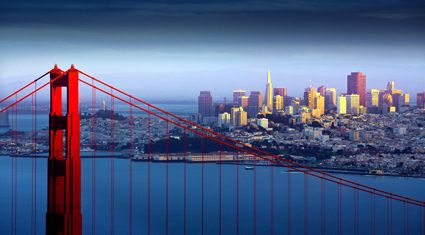
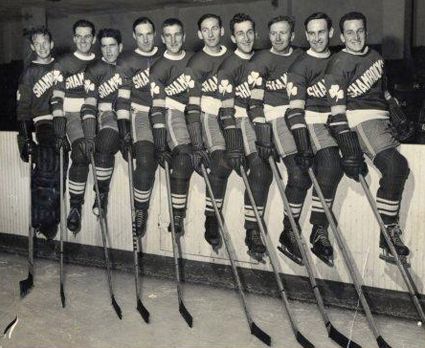
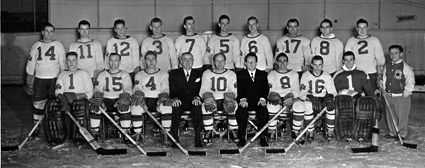
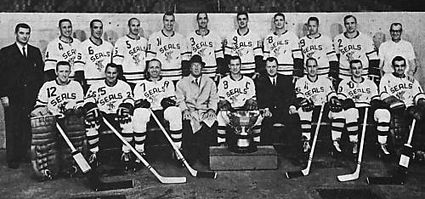
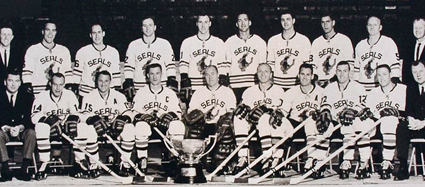
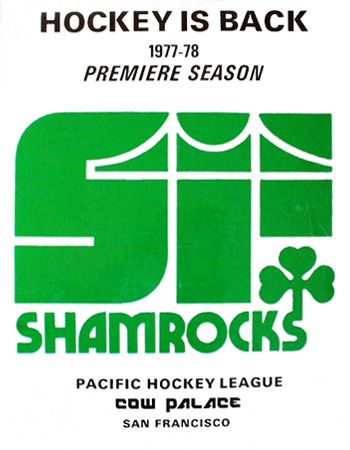
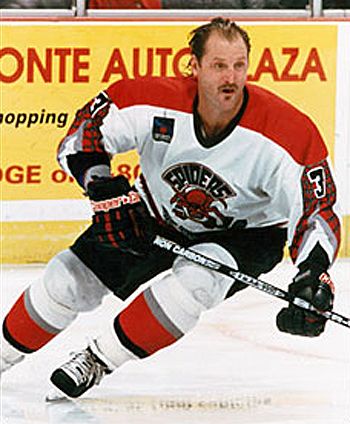
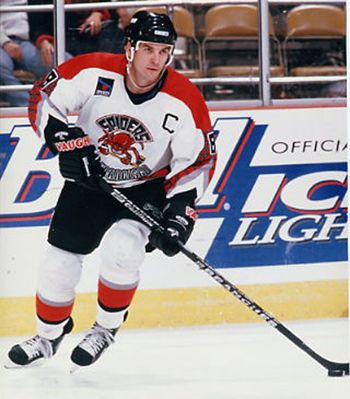

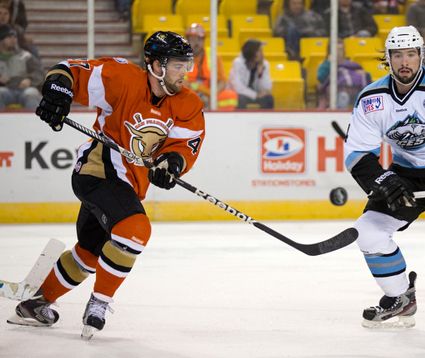
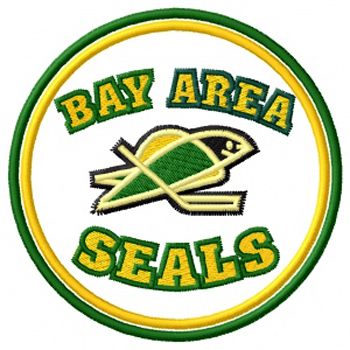
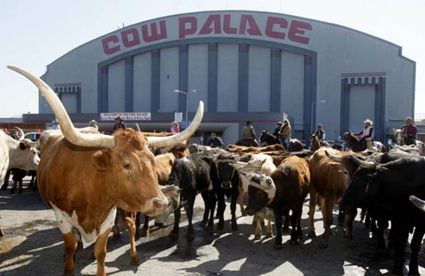
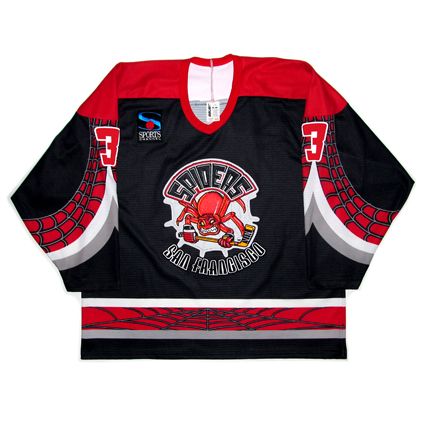
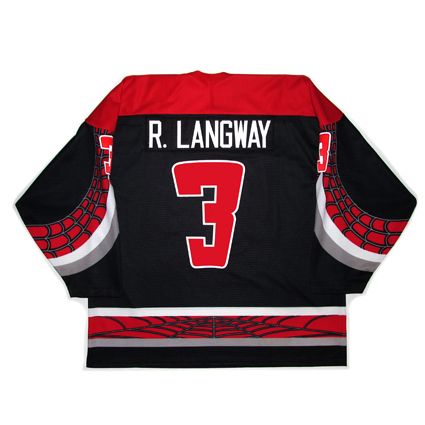
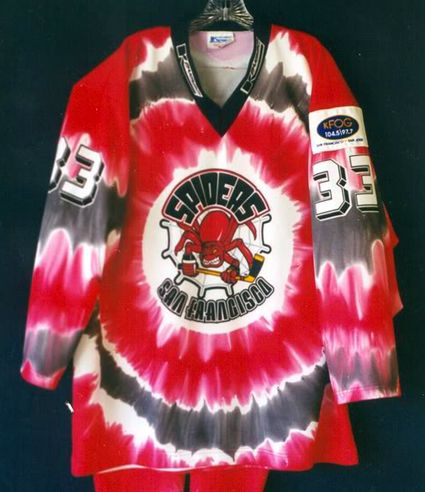











No comments:
Post a Comment
We welcome and encourage genuine comments and corrections from our readers. Please no spam. It will not be approved and never seen.